A quick brine of salt, sugar, and water will make your shrimp taste better and make them incredibly tender and juicy, whether you’re making shrimp cocktail, ceviche, or shrimp scampi. A lot of people skip this step because they don’t know how to do it. That’s why this recipe says how to brine shrimp.
You can start with fresh shrimp or thawed frozen shrimp — either will work. After adding the shrimp, you only need to quickly stir the easy solution together and let it sit for a short time. Then you can use your favorite recipe to cook them.
Although there are other ways to brine shrimp, I like this one the best because it’s quick, easy, and only needs a few things. However, if you want to impart different flavors, you can add ingredients like bay leaves, spices, and herbs.
The next time you go to make shrimp, put aside a few extra minutes to brine them. You won’t regret it!.
The simple truth is that brining shrimp makes them plump and firm, and it also helps them stay juicy while you cook them. The salt water affects the structure of the protein in the shrimp, allowing them to become tender.
The sugar, on the other hand, affects the taste and appearance of the shrimp, rather than the texture. Thanks to the sugar, they are slightly sweeter and become more brown when cooked.
There’s no doubt that brining shrimp is the best way to make sure they are juicy no matter how you cook them.
Brining shrimp before cooking is a simple technique that yields big rewards. Just a quick soak in a saltwater solution helps ensure shrimp cook up plump, juicy and packed with flavor. The brine seasons the shrimp fully and evenly, while also preventing them from drying out.
I love brining shrimp anytime I’m cooking them, whether grilling sautéing or baking. The extra moisture and seasoning the brine provides takes the shrimp from good to great. If you haven’t tried brining shrimp yet, you’re going to love how it improves their texture and makes their natural sweetness shine.
Why Brining Makes a Difference
Brining makes a difference for a few key reasons:
-
Enhances moisture – The salt in the brine helps shrimp retain moisture as they cook, leading to a juicier end result. Brined shrimp is noticeably more succulent.
-
Infuses seasoning – The brine solution flavors and seasons the shrimp throughout. This means seasoning is absorbed fully and evenly.
-
Prevents overcooking – Well-seasoned and moist shrimp are harder to overcook. The brine provides a buffer against drying out.
-
Draws out impurities – Some impurities in the shrimp will leach into the brine rather than remaining in the meat. This leads to cleaner flavor.
-
Simple process – Brining only takes minutes. The short time investment leads to big payoff in the final dish!
How to Make a Basic Shrimp Brine
A basic brine for shrimp requires just two ingredients – salt and water
The ratio is generally:
- 1 tablespoon kosher salt
- 1 quart water
This brine makes enough solution to brine 1 pound of medium shrimp.
To make the brine:
-
Combine water and salt – Add 1 quart of water to a bowl or container. Sprinkle in 1 tablespoon of kosher salt (like Diamond Crystal or other non-iodized salt).
-
Stir to dissolve – Stir the salt into the water until fully dissolved. It’s important the salt dissolves fully so the brine seasons evenly.
-
Chill brine – Pop the brine into the fridge so it’s nicely chilled before adding the shrimp. This helps the brining happen faster.
And that’s it – you’ve got your brine ready to go! The salt concentration is mild enough to just lightly season without making the shrimp overly salty.
Brining Times for Shrimp
The brining time can vary a bit depending on the size of the shrimp:
- Small shrimp – 30 minutes
- Medium shrimp – 30 minutes
- Large/jumbo shrimp – 1 hour
- Extra large prawns – 1 hour
In general, I find 30 minutes is perfect for brining smaller shrimp up to medium size. Jumbo shrimp can benefit from soaking for a full hour since the brine needs more time to permeate the larger pieces.
If shrimp brine for much longer than an hour, they can become too salty. I don’t recommend going over an hour.
How to Brine Shrimp Step-By-Step
Brining shrimp is very simple:
-
Make brine – Mix together 1 quart water with 1 tablespoon kosher salt. Chill brine.
-
Add shrimp – Add 1 pound peeled, deveined shrimp to the chilled brine. Use a container large enough to submerge shrimp fully.
-
Soak – Let shrimp soak in the brine for 30 minutes to an hour depending on size.
-
Remove and pat dry – After brining, remove shrimp from the brine and discard liquid. Pat shrimp very dry with paper towels.
-
Cook as desired – The brined shrimp is now ready to be cooked in your favorite recipes!
And that’s all it takes. Letting the shrimp relax in the saltwater bath infuses them with moisture and seasoning.
How to Season Brined Shrimp
Since the brine provides light seasoning on its own, you don’t need to add much extra salt before cooking.
Some simple ways to finish off brined shrimp:
-
Cajun seasoning – A spice blend like Cajun seasoning adds lots of flavor without salt.
-
Herb rub – Chopped fresh herbs, garlic and oil make a quick rub.
-
Chili powder – Smoked paprika and chili powder provide a flavor kick.
-
Lemon pepper – Lemon zest and pepper gives brined shrimp a citrusy aroma.
-
BBQ rub – Sweet and smoky barbecue dry rub is right at home on brined shrimp.
A light coating of oil or butter after seasoning helps the flavors stick. Then the shrimp is ready to be cooked!
Ways to Cook Brined Shrimp
Brined shrimp shines in almost any cooking method. The brine helps keep shrimp succulent no matter how it’s prepared.
Some great ways to cook brined shrimp:
-
Grilled – Brined shrimp is perfect for the grill. The brine prevents it from drying out over the high heat.
-
Sautéed – Cook brined shrimp in a pan with garlic, lemon and white wine.
-
Baked – Brined shrimp bakes up tenderly moist and flavorful.
-
Broiled – Broil brined shrimp for quick cooking with charred bits.
-
Fried – Crispy fried brined shrimp has seasoned flavor in every bite.
-
Skewered – Alternate brined shrimp and veggies on skewers for easy kebabs.
However you choose to cook your shrimp, the brine gives you much better odds of juicy, properly seasoned results. No more bland, rubbery shrimp!
Storing and Handling Brined Shrimp
Here are some tips for storage and handling with brined shrimp:
-
Cook brined shrimp within a couple hours for best texture.
-
Store brined raw shrimp in the fridge if not using right away.
-
Cooked brined shrimp keeps well refrigerated for 2-3 days.
-
Freeze extra raw brined shrimp for up to 3 months. Thaw before cooking.
-
Discard any leftover brine solution after brining. Don’t reuse it.
Brining really maximizes the shelf life of shrimp. It prevents them from drying out as quickly.
Brining Other Types of Seafood
While shrimp benefits hugely from brining, the technique can also be used with other types of seafood:
-
Fish fillets – Lean fish also does well with brining before baking or grilling.
-
Scallops – Brine large scallops for 1 hour before searing in a pan.
-
Squid – Tenderize squid by soaking for 1 hour in brine.
The same 1 quart water to 1 tablespoon kosher salt ratio works for these other types of seafood too. Firmer fish may need to brine for the full hour.
Why I Always Brine My Shrimp
I’ve become such a big believer in brining shrimp that I now do it automatically every time I’m cooking them.
The little time needed pays off exponentially in the superior cooked results. Brined shrimp is noticeably more moist, flavorful and seasoning-friendly.
It’s an easy step that takes shrimp from meh to amazing. I’ve had way too many rubbery, bland shrimp in my lifetime. Brining solves these common problems for good.
Once you try brined shrimp and experience how perfect they turn out, you’ll never make them any other way again. I’m hooked for life!
So next time you’re making any shrimp dish, take a few minutes to let them have a soak in salted water beforehand. Your tastebuds and your recipe will thank you. Brined shrimp cooked any style is an absolute winner.
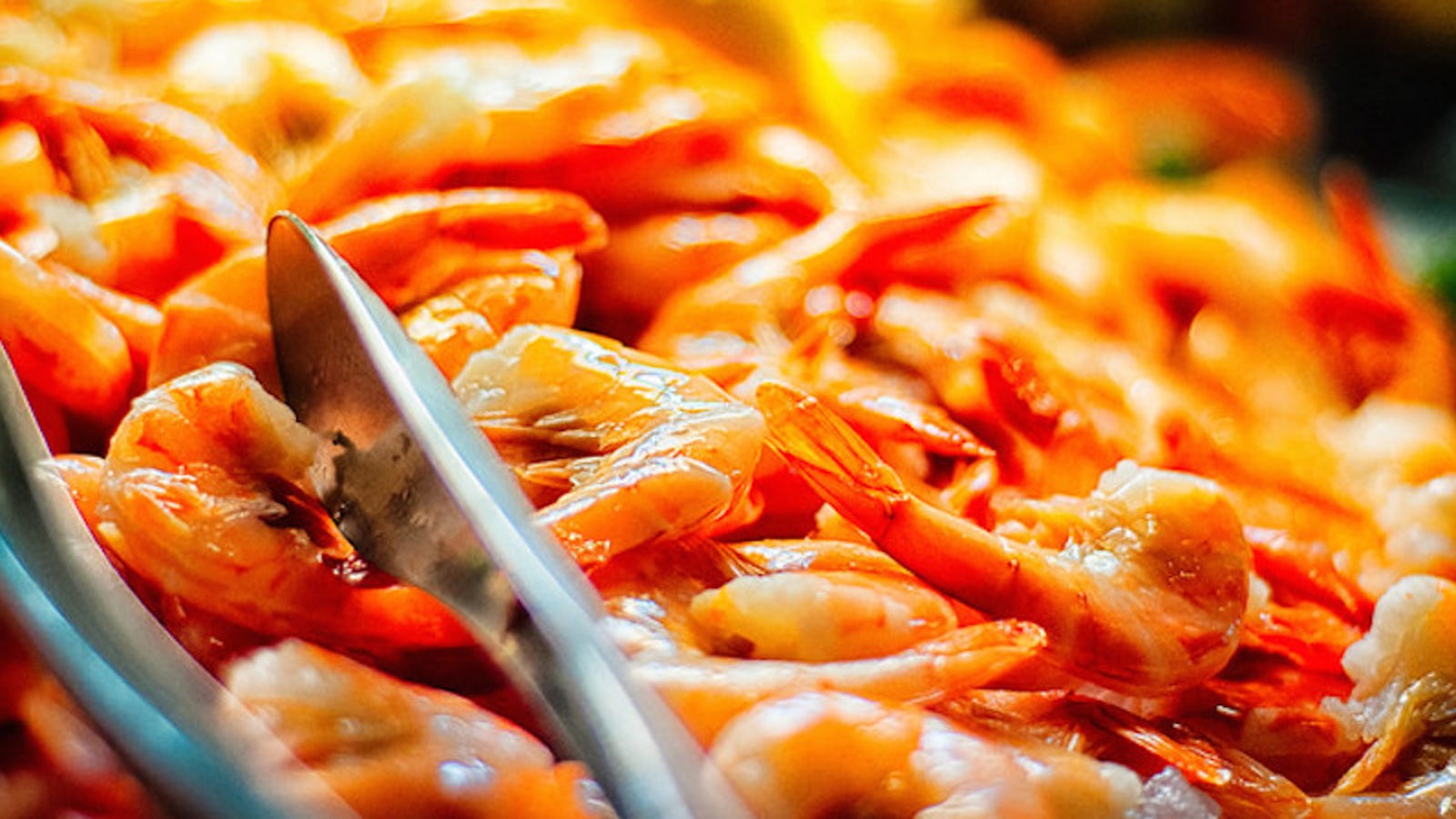
Other Easy How-Tos For Brining Protein
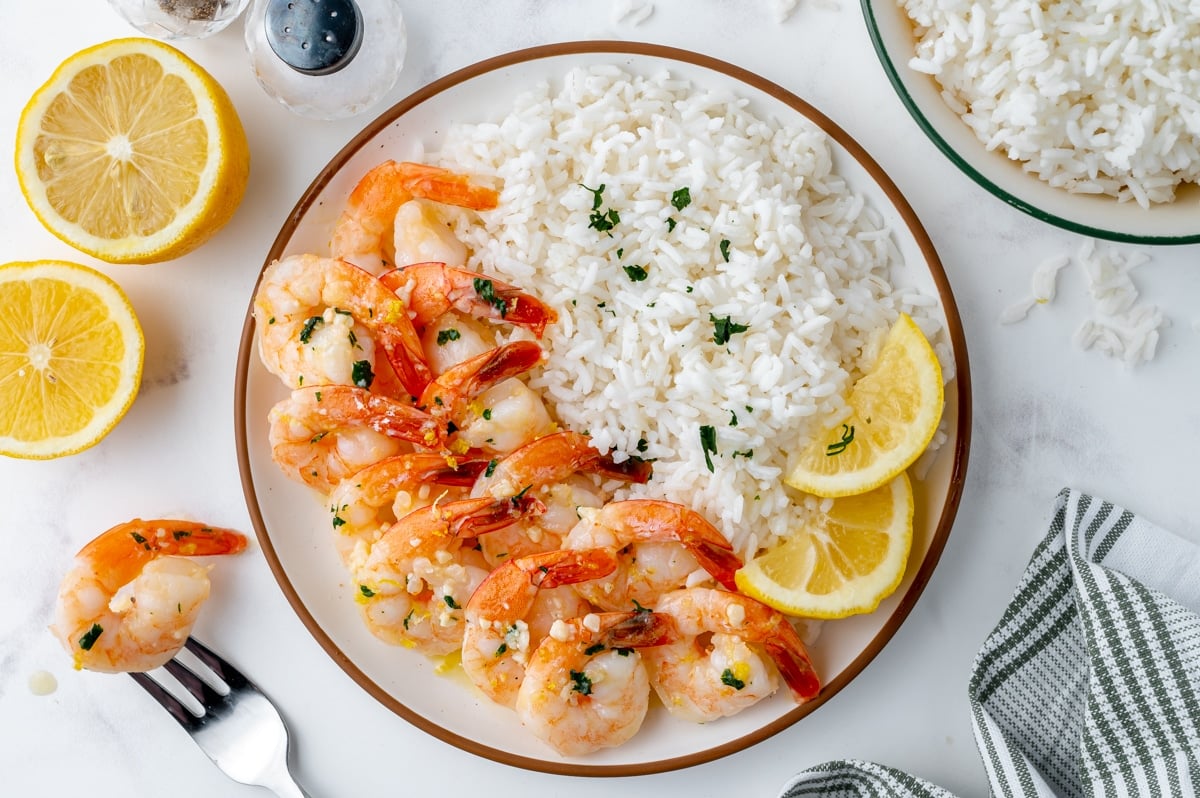
How To Brine Your Shrimp
The hands-prep time for both brining and cooking is minimal.
- Put sugar, salt, and water in a large bowl and mix them together until the salt is gone.
- Put the shrimp that have been peeled into the bowl with the brining solution. As long as the water level is above them all, there should be enough brine solution to cover them all.
- You should let the shrimp soak in the brine for the right amount of time.
- Take the shrimp out of the salt water when you’re ready to cook them. Use paper towels or a clean kitchen towel to gently dry them.
- Melt the butter and garlic in a large pan.
- Toss the shrimp around in the pan slowly until they turn pink and stop being see-through. As the shrimp cooks, the tail should curl.
- Transfer to a plate, garnish, and serve.
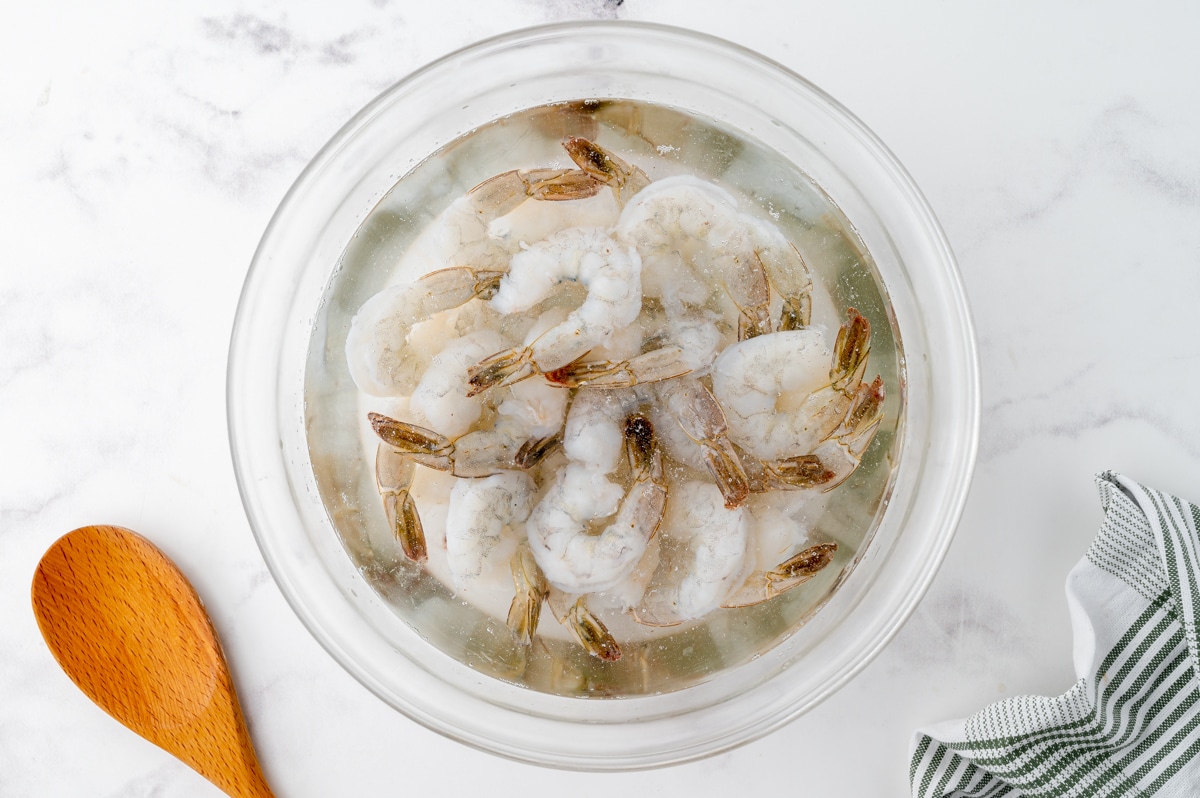
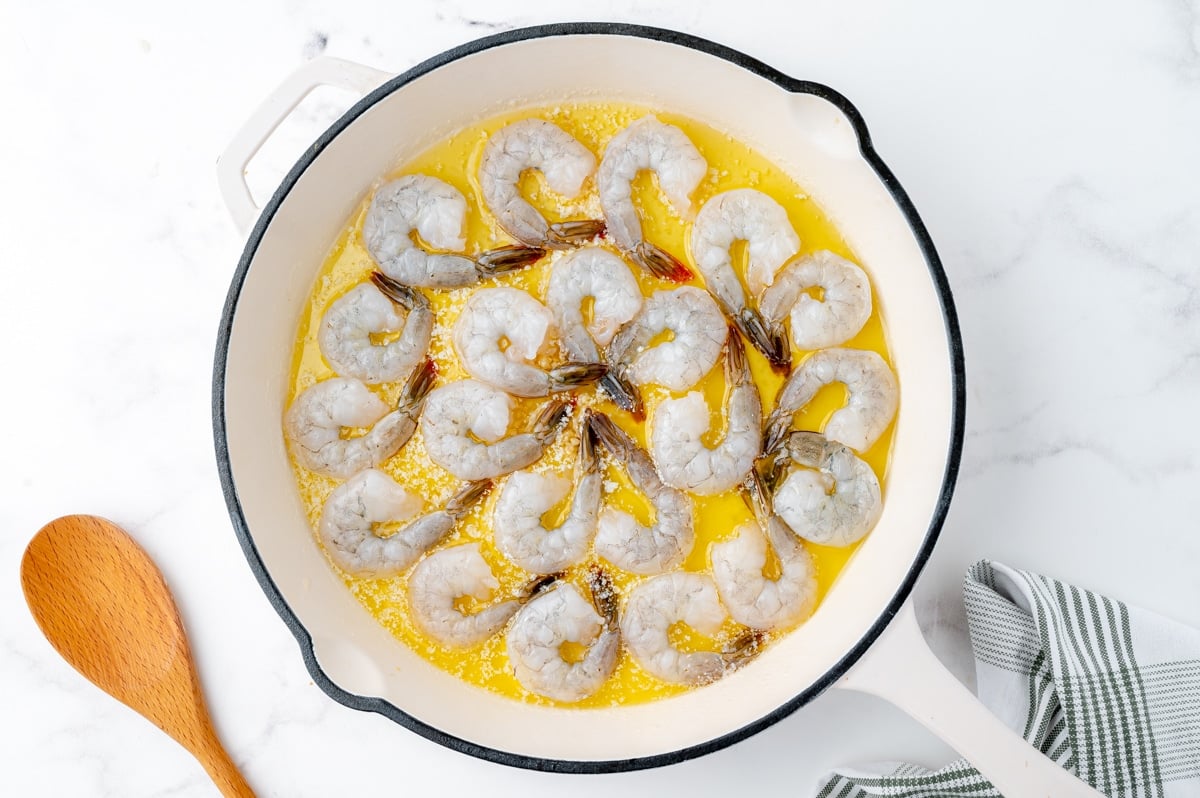
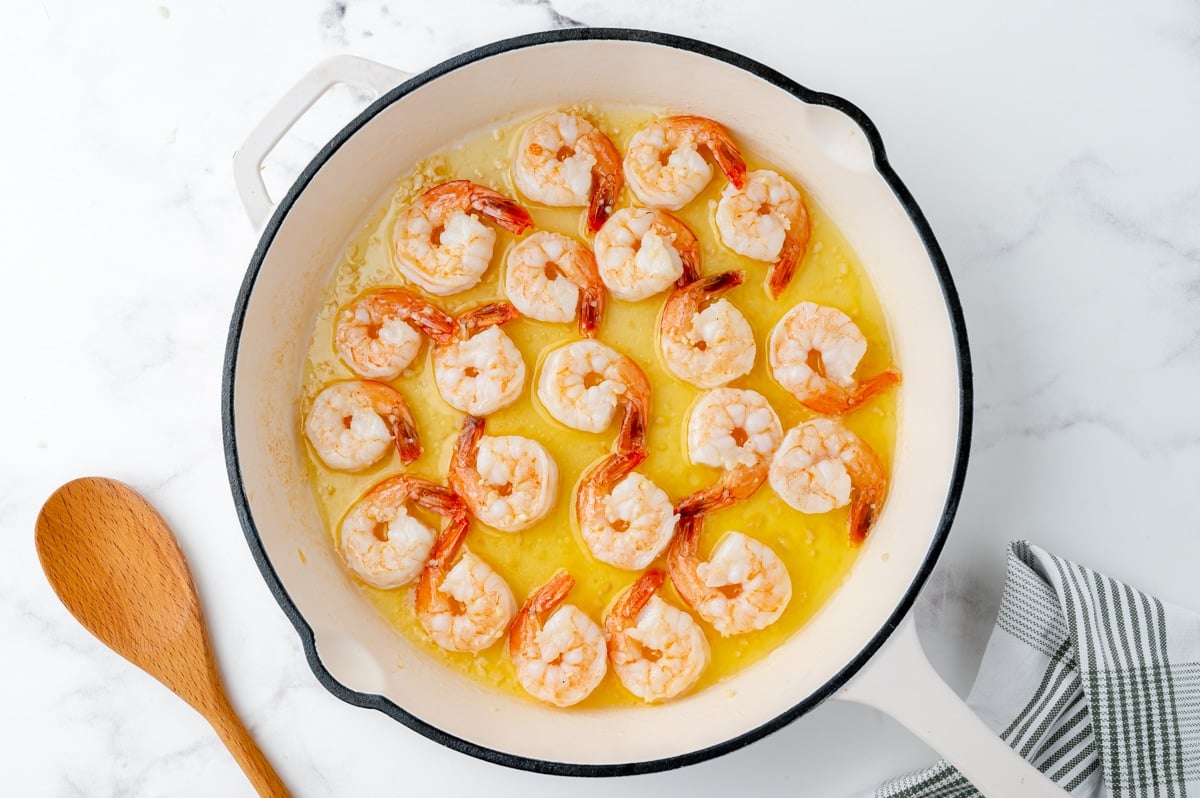
“How Can I Cook Tender Shrimp, and How Can I Keep Them from Curling?
Should you brine shrimp before cooking?
A quick brine before you cook shrimp can make sure they’re plump and juicy, no matter how you plan to cook them. You only need to let the shrimp sit in the brine for as little as fifteen minutes and you’ll lock in moisture, add a little flavor, and preserve a firm texture. Even if you’re working with frozen shrimp, you should still brine them.
Can one eat raw shrimps?
While raw shrimp or shrimp sashimi can be consumed safely, raw shrimp is considered a high-risk food because it can harbour harmful bacteria such as Salmonella and various Vibrio bacteria. Although some people consider the seafood used in ceviche raw, it is actually cooked by immersing it in an acid rather than using heat. The acid from the citrus can reduce harmful bacteria but it is not as effective as using heat. The safest approach would be to consume only cooked shrimp from a reliable source. The US Food and Drug Administration(FDA) advises that pregnant women, those with weakened immunity, older adults, and young children are at higher risk of foodborne illness and its consequences and should avoid all raw seafood.
How do you brine shrimp?
Brining is hands-down the best way to ensure that you wind up with succulent shrimp on your plate no matter how you cook them. You only need a few basic ingredients from the grocery store to both brine and cook the shrimp. To Brine: Cold water – Be sure to use cold water so that the shrimp remain at a safe temperature while brining.
How long should shrimp be brined?
To achieve the best results, shrimp should be brined for a period of at least 15 minutes up to an hour. The brining process enhances the flavor and texture of the shrimp, helping to make it juicier and tastier.
